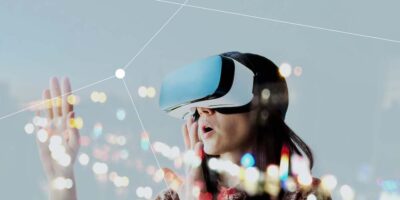Renesas Electronics has announced the SmartBond DA1470x family of Bluetooth low energy (LE) integrated SoCs for wireless connectivity.
Renesas claimed the DA1470x family to be the only device in the Bluetooth LE space to integrate a power management unit, a hardware voice activity detector (VAD), a graphics processing unit (GPU) and Bluetooth LE connectivity all into a single chip.
This combined functionality provides smart IoT devices with advanced sensor and graphical capabilities and seamless, low power, always-on audio processing. The SoCs are suitable for wearables, such as smart watches and fitness trackers, glucose monitor readers and other consumer medical and healthcare devices, home appliances with displays, industrial automation and security systems, and Bluetooth consoles such as e-bikes and gaming equipment.
“The DA1470x family … enables developers to push the boundaries of connected consumer and industrial applications and future-proof their IoT products to fit the needs of multiple applications, while optimising their bill of materials,” commented Sean McGrath, vice president of the connectivity and audio business division in Renesas’ IoT, Industrial and Infrastructure business unit.
The high level of integration results in “significant cost savings” on the bill of materials (BoM), enabling cost-effective system solutions, according to the company. It also reduces component count on the PCB, enabling smaller form factor designs and freeing up space for additional components or larger batteries. With fewer components on the PCB, the reliability of the system improves, it claimed, delivering a further reduction in the total cost of goods sold (COGS) of the end product.
The wireless SoCs feature a multi core system – with an Arm Cortex-M33 processor as the main application core and Cortex -M0+ as the sensor node controller.
An integrated 2D GPU and display controller supports DPI, JDI parallel, DBI and single / dual / quad serial peripheral interfaces (SPIs) and there is a configurable Mac supporting Bluetooth LE 5.2 and proprietary 2.4GHz protocols.
An integrated 720mA JEITA-compliant USB charger supports rechargeable Li-ion / Li-Po batteries, while an integrated low quiescent current SIMO DC/DC converter of the PMU supplies internal system and external components.
Low power hardware VAD enables seamless and always-on audio processing.
The DA1470x family consists of four new devices, all of which are in mass production and available now.
The DA14706 has already been used in the Xiaomi Mi band 7 wearable activity tracker with a 1.62-inch, 192×490 Amoled display, 120 sports modes and a 15-day battery life for typical use.
The DA1470x family will be demonstrated at Embedded World (21-23 June) in Nuremberg, Germany, at Booth Hall 1-234.
A provider of microcontrollers, Renesas combines its expertise in embedded processing, analogue, power and connectivity to deliver complete semiconductor solutions. These combinations accelerate time to market for automotive, industrial, infrastructure and IoT applications.







